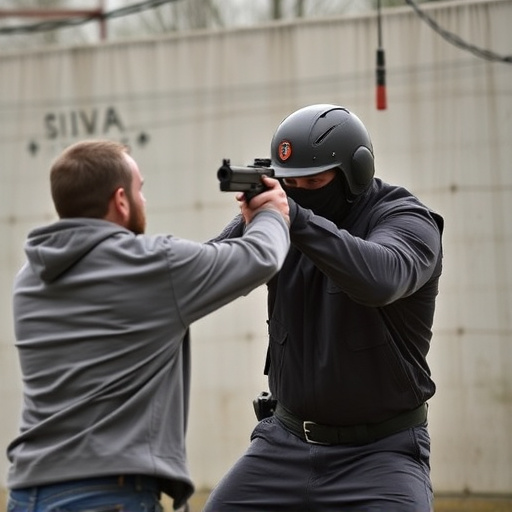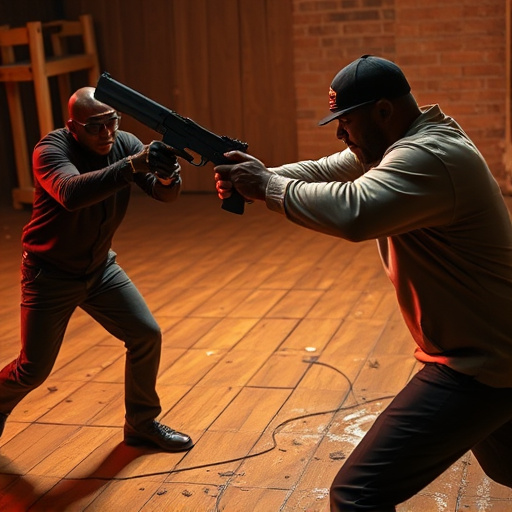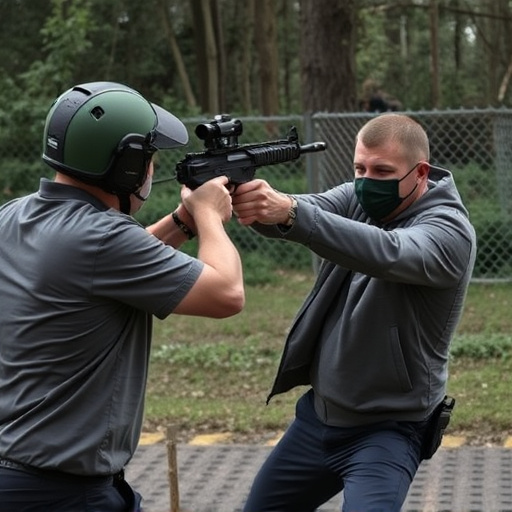Choosing between compact stun guns for purse carry and more powerful contact stun weapons depends on personal defense needs. Compact options offer discreet self-defense with easy concealment, ideal for women seeking convenience. However, they have limited range and voltage, and legal implications vary by region. Contact stun weapons provide immediate impact during close encounters but are less versatile. Responsible ownership of any stun weapon involves understanding functionality, secure storage, training, and local laws to minimize risks associated with non-lethal self-defense tools.
In the realm of personal safety, stun weapons have emerged as a controversial yet effective deterrent. This article delves into the nuanced world of projectile and contact stun devices, highlighting key differences that shape their utility. We further explore compact stun guns designed for purse carry, weighing pros, cons, and essential considerations. Additionally, legal aspects and safety guidelines are dissected to empower owners in today’s digital era. For those seeking to enhance personal security, understanding these options is paramount.
- Understanding Projectile and Contact Stun Weapons: Key Differences
- Compact Stun Guns for Purse Carry: Pros, Cons, and Considerations
- Legal Aspects and Safety Guidelines for Stun Weapon Owners
Understanding Projectile and Contact Stun Weapons: Key Differences

Projectile and contact stun weapons represent two distinct categories in personal defense tools, each with unique characteristics that cater to different user needs and preferences. Projectile stun devices, such as pepper spray canisters and stun guns firing non-lethal projectiles, offer a strategic advantage by enabling distance between the user and the target. This feature is particularly appealing for self-defense scenarios where de-escalation and maintaining control are paramount. These weapons are ideal for compact stun guns designed for purse carry, providing users with a discreet yet powerful option to protect themselves in various environments.
In contrast, contact stun weapons, like traditional stun batons or hand-held electric tasers, rely on direct physical contact to deliver an electrical shock. They are effective for close-quarters encounters where the user can ensure proper contact with the target’s body. While less versatile in terms of distance control, they offer a swift and potent response during high-intensity situations. This difference underscores the importance of understanding one’s specific needs and choosing between these two types of stun weapons accordingly.
Compact Stun Guns for Purse Carry: Pros, Cons, and Considerations

Compact stun guns designed for purse carry offer a subtle yet powerful personal defense option for women and individuals seeking discretion. Their small size allows them to be easily hidden within a purse or backpack, providing a sense of security in potentially dangerous situations. These devices are particularly appealing for those who prefer non-lethal force options and want the convenience of having a stun weapon readily available without drawing attention.
However, there are considerations when choosing a compact stun gun. Weight and battery life can be trade-offs; heavier models may offer more power but reduce comfort during prolonged carry. Additionally, range and voltage vary among brands, with some requiring closer proximity for activation. Users must also consider legal implications, as regulations regarding stun guns differ by region, ensuring compliance is essential for lawful possession.
Legal Aspects and Safety Guidelines for Stun Weapon Owners

Stun weapons, whether in the form of compact stun guns or other devices, come with a range of legal considerations and safety guidelines that owners must be aware of. In many jurisdictions, stun guns are classified as less-lethal or non-lethal weapons, which means they are permitted for self-defense purposes but subject to specific regulations. These may include restrictions on who can own them, where they can be carried, and how they can be used. For instance, some areas require permits or registration for stun devices, while others have age limitations, mandating that users be a certain minimum age.
Safety is paramount when handling any type of weapon, and stun guns are no exception. Owners should familiarize themselves with the device’s functionality, including understanding the range, activation mechanisms, and any safety features. It’s crucial to store them securely, preferably in a locked case or safe, and keep them out of reach of children. Additionally, users must be trained in their proper use, ensuring they only deploy the weapon when necessary for self-defense, as misuse can lead to serious injuries. Always follow local laws and guidelines to ensure responsible ownership and minimize potential risks associated with stun weapons, especially compact stun guns designed for purse carry.
When choosing between projectile and contact stun weapons, considering your specific needs and legal boundaries is paramount. For those seeking discreet self-defense options, compact stun guns designed for purse carry offer a convenient solution. However, understanding the pros and cons, as well as adhering to safety guidelines and local regulations, is crucial. These devices can serve as effective deterrents in various situations, but responsible ownership and awareness of legal implications are essential for their safe and responsible use.
